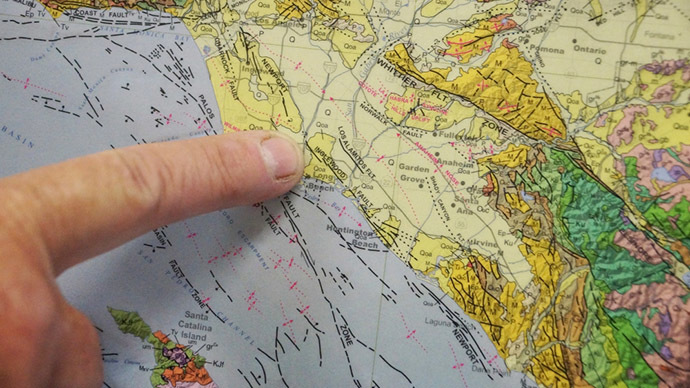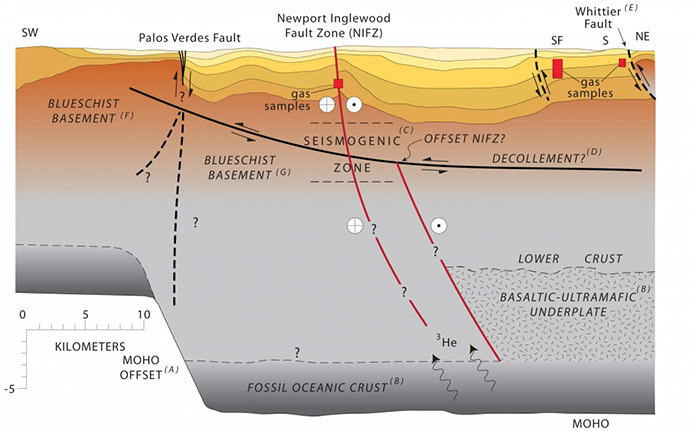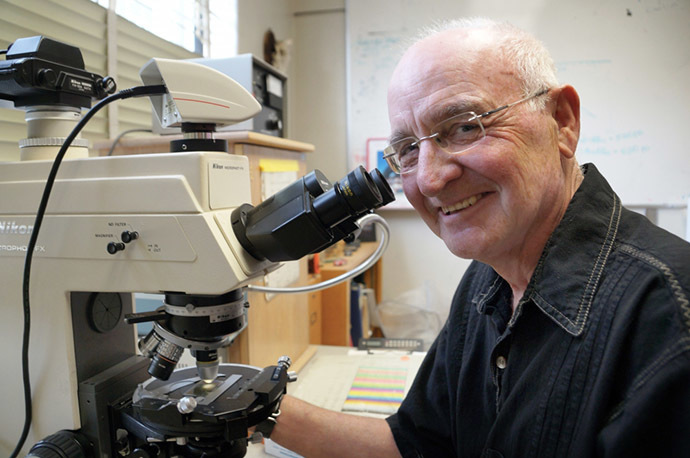Explosive helium leaking from deep earthquake fault zone in S. California – new study

An American geologist has discovered high levels of the explosive helium-3 leaking from the Southern California’s earthquake fault zone which appeared deeper and more significant than previously thought , a new study shows.
UC Santa Barbara geologist Jim Boles has found that high levels of helium-3 (3He) have been leaking across a 30-mile stretch of the Newport-Inglewood Fault Zone in the Los Angeles Basin. He presented his findings in the a new study recently published in Geochemistry, Geophysics, Geosystems (G-Cubed), a journal of the American Geophysical Union and the Geochemical Society.
"We show that the Newport-Inglewood fault is not only deep-seated but also directly or indirectly connected with the mantle," Boles said as cited by the university press release.
He added that the findings indicate that the fault is a “lot more important than previously thought.”
"The results are unexpected for the area, because the LA Basin is different from where most mantle helium anomalies occur," he said.
3He is a light, non-radioactive isotope of helium which is rare on Earth. It has been found by prior research to come from deep within the Earth. 3He is a primordial nuclide, which are considered to be residues from cosmogenic sources such as the Big Bang and from ancient supernova explosions. It is sought for use in nuclear fusion.
“About 30 million years ago, the Pacific plate was colliding with the North American plate, which created a subduction zone at the Newport-Inglewood fault," Boles explained. "Then somehow that intersection jumped clear over to the present San Andreas Fault, although how this occurred is really not known.”
After the US geologists from the UC Santa Barbara analyzed 24 gas samples they discovered that high levels of 3He inversely correlate with its carrier gas carbon dioxide (CO2), which also came from the mantle. In addition, the geologists found blueschist – a rock type of roughly basaltic composition with minerals – at the bottom of nearby deep wells. According to the study it also indicates that the Newport-Inglewood fault is an ancient subduction zone – where two tectonic plates collide – even though its location is more than 40 miles west of the current plate boundary of the San Andreas Fault System.

“This paper shows that the mantle is leaking more at the Newport-Inglewood fault zone than at the San Andreas Fault, which is a new discovery,” the author said.
The Newport-Inglewood Fault stretches extends for 47 miles from Culver City southeast to Newport Beach and trends east-southeast into the Pacific Ocean. The fault is right-lateral while its offset is predominately horizontal, parallel to the fault trace. It doesn’t form the plate boundary, whereas the San Andreas Fault is a continental transform fault that forms the tectonic boundary between the Pacific Plate and the North American Plate.
READ MORE: California’s ‘Big One’ could trigger super cycle of destructive quakes – study
"The Newport-Inglewood fault appears to sit on a 30-million-year-old subduction zone, so it is surprising that it maintains a significant pathway through the crust."
One of the deadliest earthquakes along the Newport-Inglewood fault was the Long Beach earthquake, which occurred on March 10, 1933. It registered a magnitude 6.3 killing 115 people. It also was the second most deadly earthquake in California history, after the 1906 San Francisco earthquake.

Meanwhile, a recent study made by American seismologists said that a major earthquake – called “the Big One” – is statistically almost certain in California in the coming decades. They added that it is likely to be followed by a “super cycle” – a series of similar-sized temblors.












